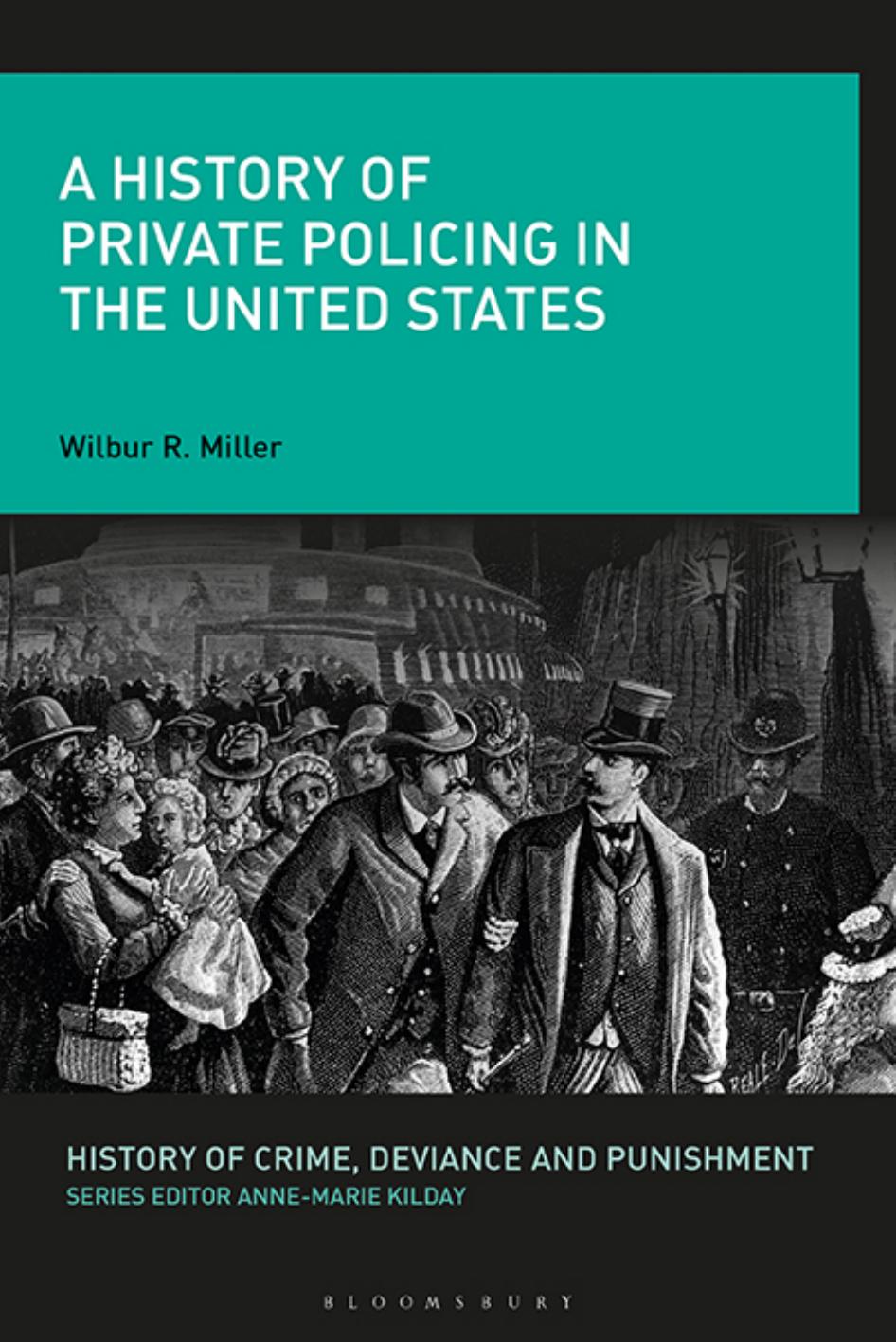A History of Private Policing in the United States by Wilbur R. Miller

Author:Wilbur R. Miller [Miller, Wilbur R.]
Language: eng
Format: epub, pdf
Tags: Business & Economics, Infrastructure, Social Science, General
ISBN: 9781474204941
Google: -YNczgEACAAJ
Publisher: Bloomsbury Academic
Published: 2019-01-15T22:30:39+00:00
Figure 5 Strikebreakers Escorted by Pinkertons, Hocking Valley Ohio, 1884. Frank Leslieâs Illustrated Newspaper, October 25, 1884, p. 152. Library of Congress Prints and Photographs Division, LC-USZ62-118122 (b&w film copy neg.).
6
Policing Labor
After the Civil War, American industry accelerated its long evolution from artisan labor to wage or piece-work labor. The older factory system, which did not entirely disappear, was based on skilled workers who had considerable power to hire less-skilled members of their work team and set a âpriceâ the owner paid them for their product. A factory was simply an assemblage of groups of artisans who, while they did not own the shop, retained some control of working conditions. Manufacturers, many of whom had been artisans themselves, needed the skilled workers to continue production. By the 1850s, it became clear to many workers that they were losing their power relative to employers, who began to implement hourly wages or piece-work payment as a means of increasing production and controlling pricing. Some workers after the war began to complain that since physical slavery had been abolished, it was time to abolish wage slavery.
Industrial unions like the National Labor Union and Knights of Labor (both founded in the 1860s) opposed wage payment and advocated, and sometimes established, cooperative factories run by the workers themselves. Not until the 1880s did the American Federation of Labor (AFL) tacitly accept wages and sought only better pay and hours for its craft union members. Meanwhile, employers were doing their best to reduce the cost of labor by deskilling the work process through introduction of machinery and hiring of low-wage unskilled immigrant workers.
During the later nineteenth century, ownership of factories, railroads, and mines increasingly became separated from local management. Owners of industrial conglomerates like Andrew Carnegieâs steel empire often knew a great deal about steel, as did Carnegie, but he did not know much about the lives of workers. Financiers and bankers, like Jay Gould with his railroad networks, or J.P. Morgan who bought out Carnegie in 1901 to create United States Steel, relied on managers even more than entrepreneurs like Carnegie. In times of depression, employers cut wages without thought of whether workers could live at the new level.
Skilled workers still had room to maneuver because in many industries they remained important, but in those where workers were becoming âmachine tendersâ or âhandsâ working by the hour, they increasingly lost control of their lives. As industries grew larger and smaller factories were absorbed into larger operations, many workers accelerated efforts to form unions, their ultimate weapon being the strike to stop production. Strikes, some small brief events, others major outbursts of bitterness and violence, such as the 1877 railroad strikes, the 1880s eight-hour strikes, the Homestead steel and Pullman sleeping car strikes of the 1890s, the Western mining strikes of the early 1900s, New York garment industry strikes, and the great steel strike of 1919, punctuated the years between 1865 and 1920. Employers, believing in the absolute necessity of reducing labor costs and that only they had the right to control the business, resisted unionization.
Download
A History of Private Policing in the United States by Wilbur R. Miller.pdf
This site does not store any files on its server. We only index and link to content provided by other sites. Please contact the content providers to delete copyright contents if any and email us, we'll remove relevant links or contents immediately.
Women and Jewish Marriage Negotiations in Early Modern Italy by Howard Tzvi Adelman(406)
Warrior King by Wilbur Smith(365)
18 real-life stories of serial killers and murderers with solved and unsolved killings from the USA, UK, Europe, and beyond. by Ben Oakley(284)
The Battle of Austerlitz by 50minutes(279)
Violence and Emotions in Early Modern Europe by Susan Broomhall;Sarah Finn;(274)
Who's Who in the Zulu War, 1879: The British by Adrian Greaves Ian Knight(271)
The American Crisis by Unknown(263)
Youth, Heroism and War Propaganda: Britain and the Young Maritime Hero, 1745â1820 by D. A. B. Ronald(237)
The Seeker by S. G. MacLean(229)
The Origins of French Absolutism, 1598-1661 by Alan James(217)
The Dutch East India Company and British East India Company: The History and Legacy of the Worldâs Most Famous Colonial Trade Companies by Charles River Editors(211)
The Traitor of Colditz by Robert Verkaik(200)
A Genius for Confusion by Richard M. Fried(198)
Invisible Worlds by Peter Marshall(198)
The Thirty Years War â Complete by Friedrich Schiller(198)
Fires of Faith by Catholic England under Mary Tudor(196)
The Opium Wars: Exploring the Addiction of Empires from Beginning to End by Ramos Adrian & Compacted History(193)
The Slave Trade in Africa by Simon Webb;(193)
Interest and Connection in the Eighteenth Century by Jacob Sider Jost(192)
